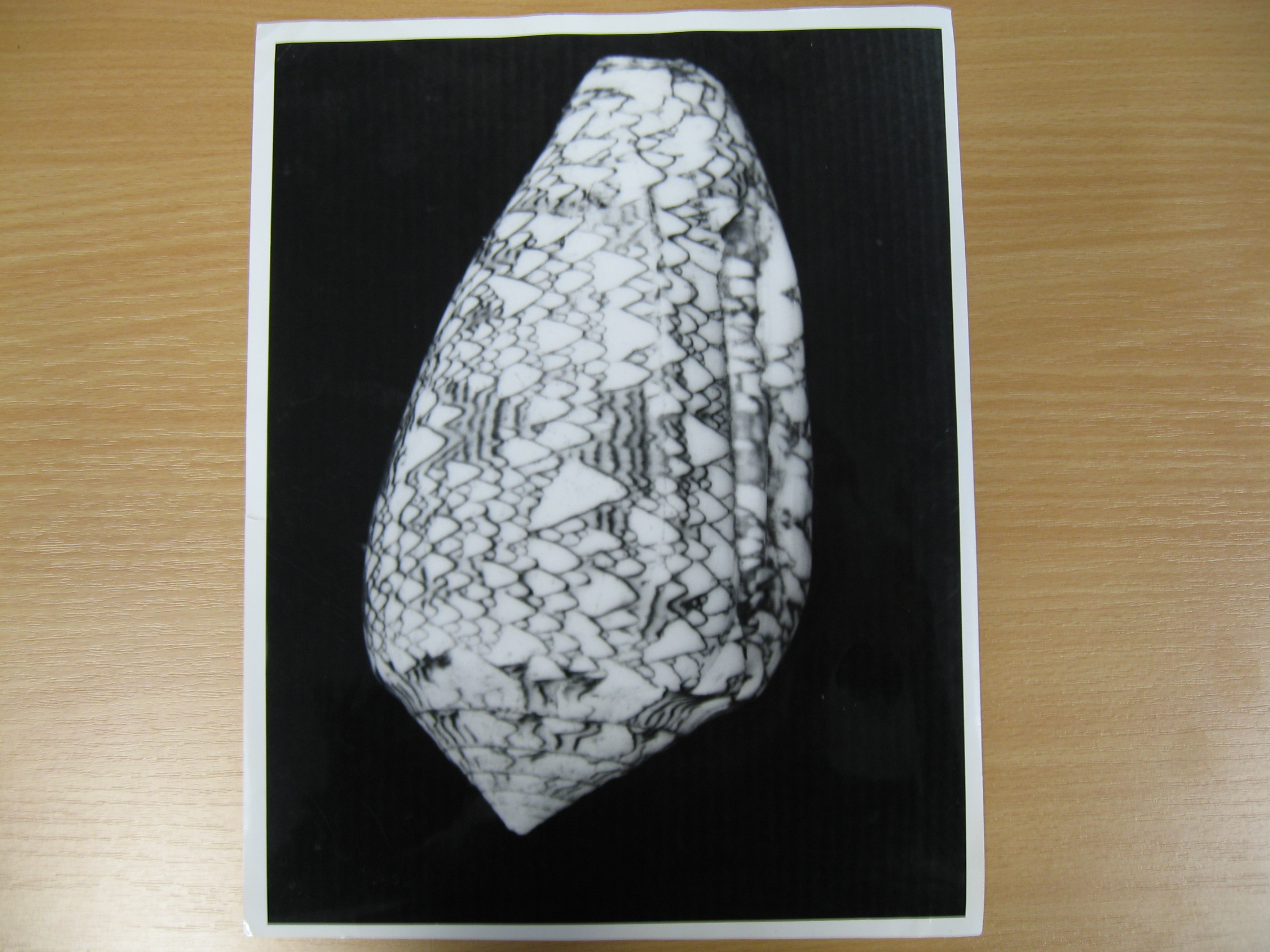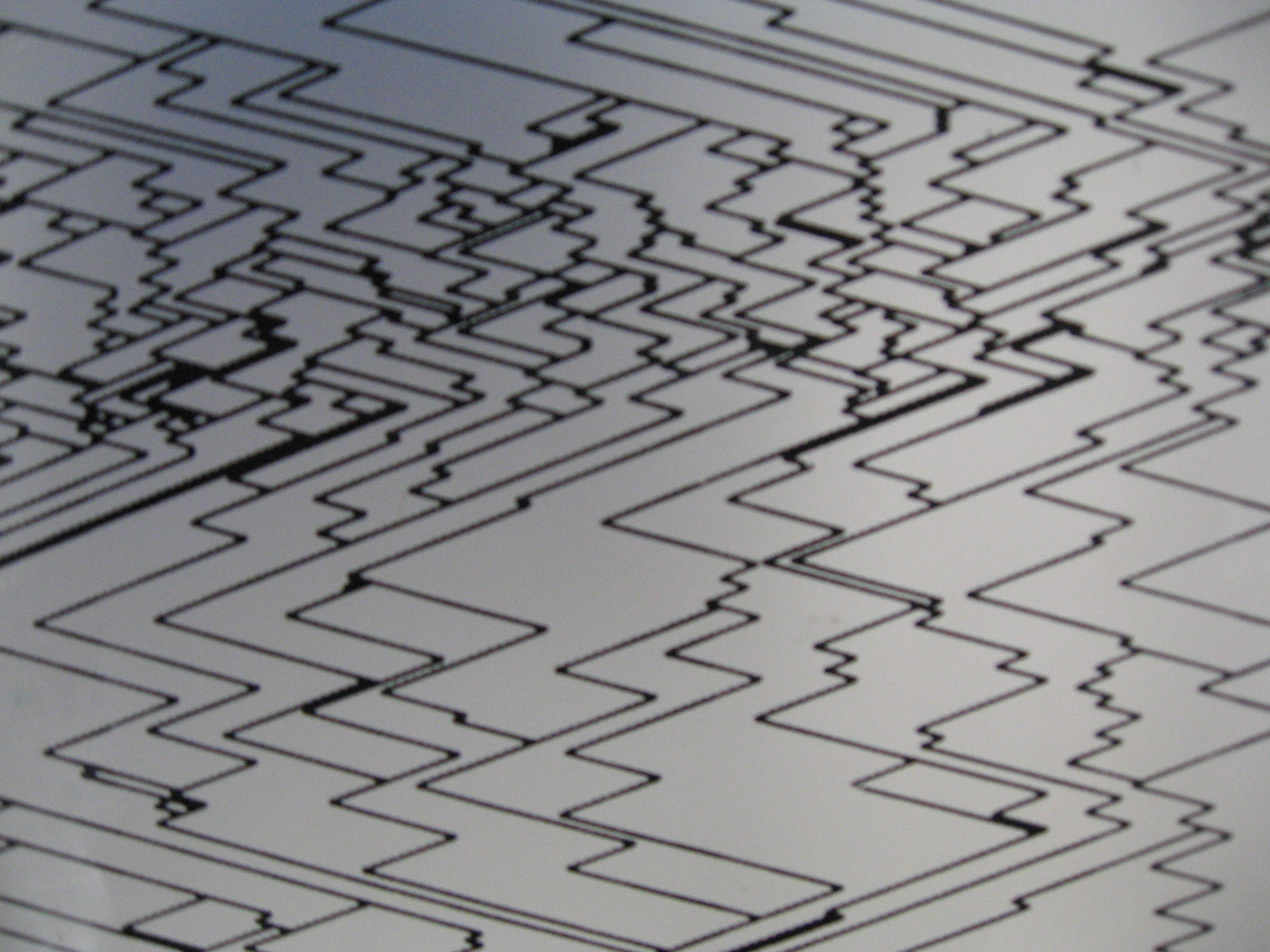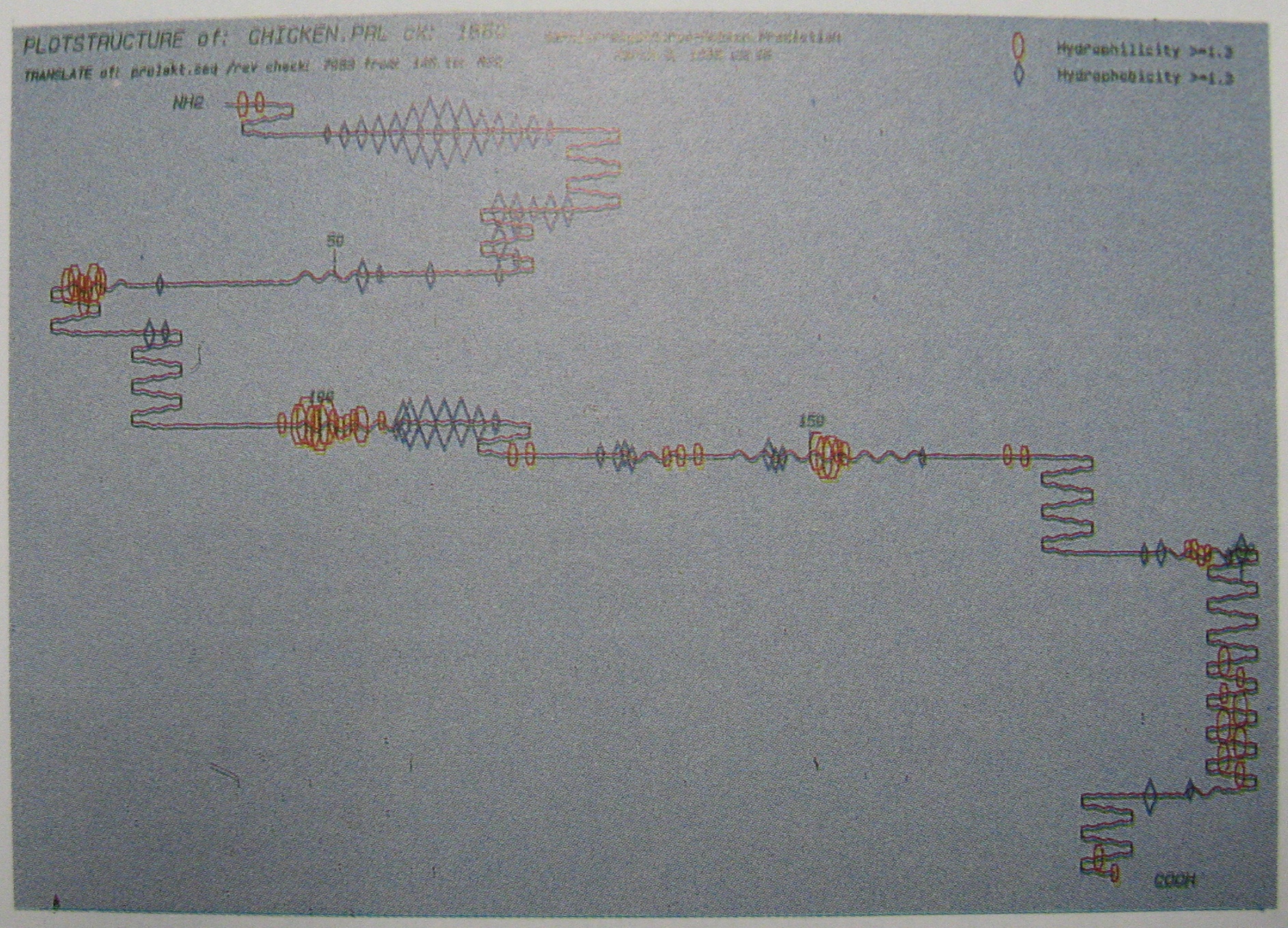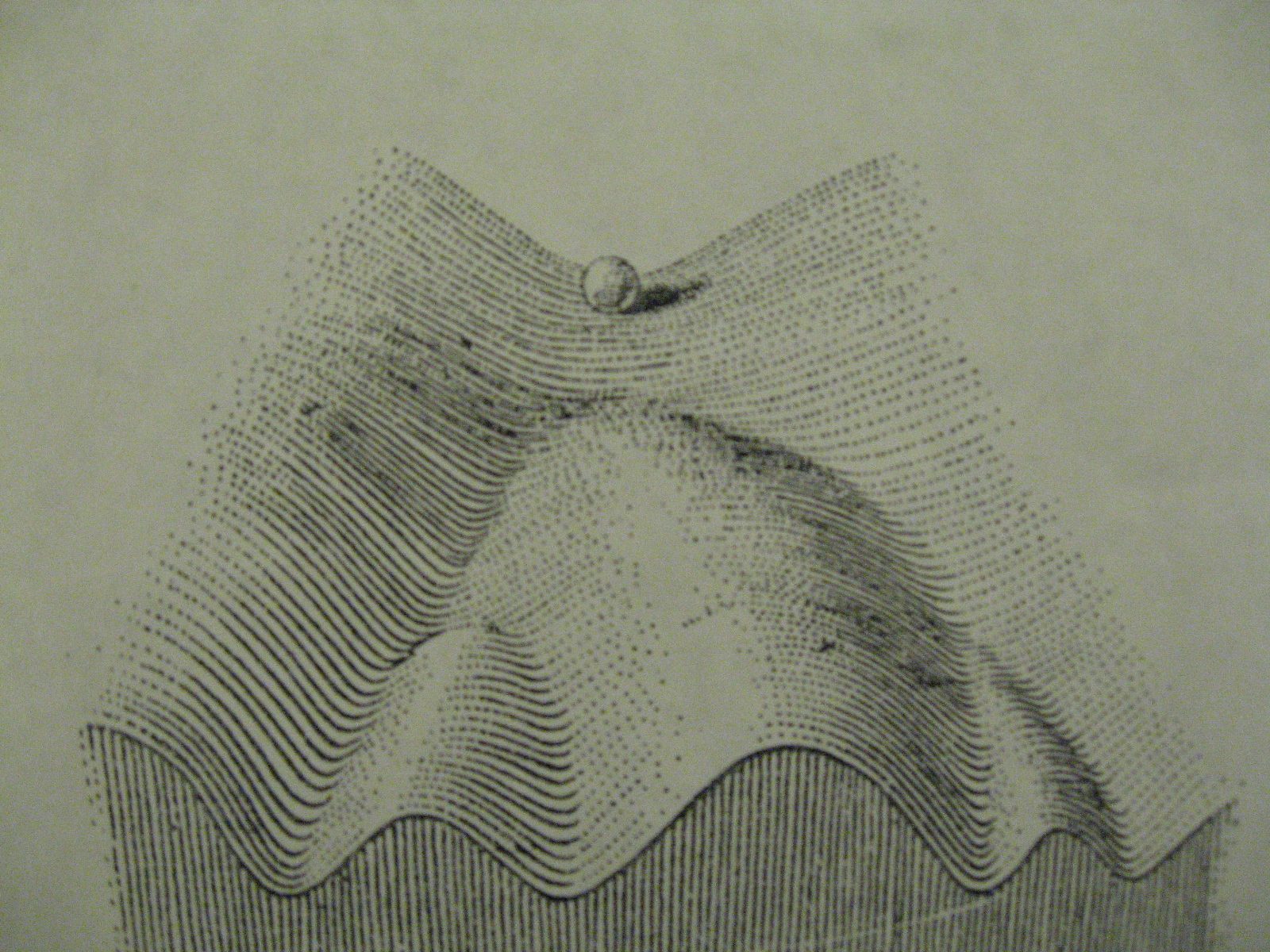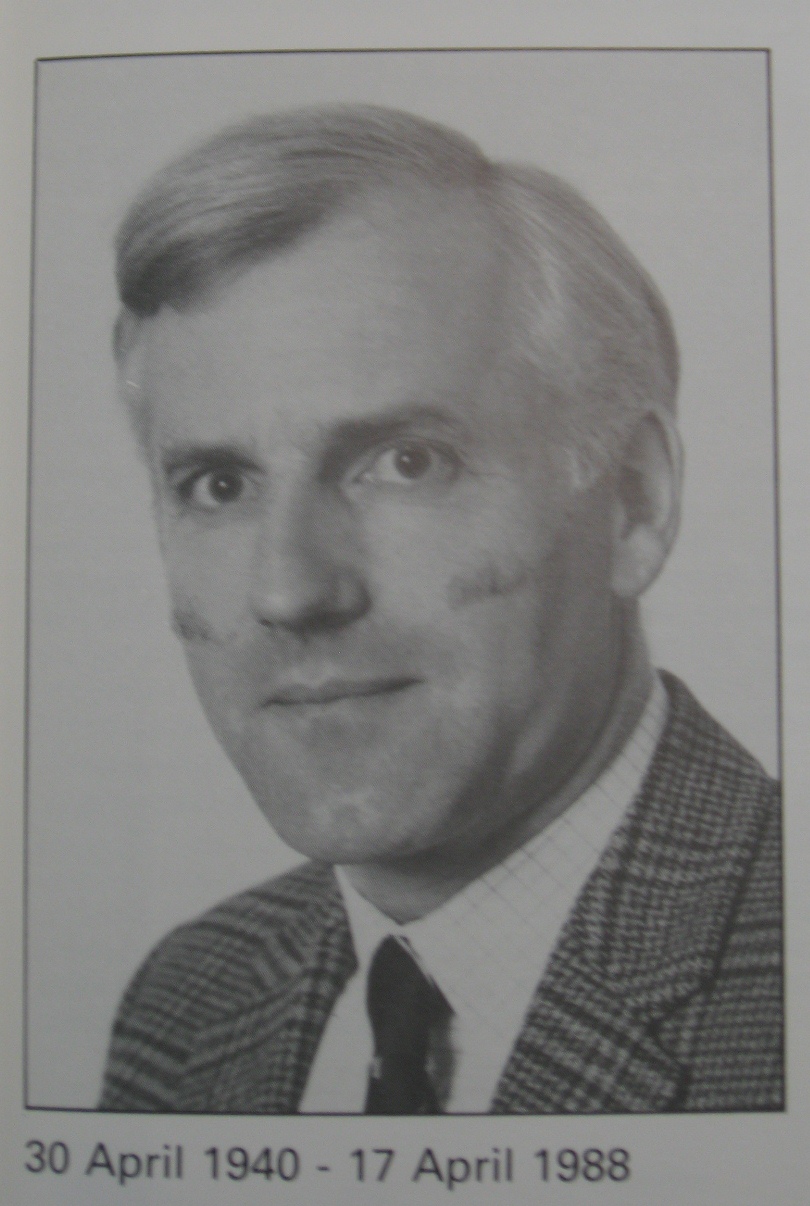As we saw on a post here two weeks ago, Waddington was very interested in exploring the processes by which the shapes and patterns of biological forms are brought into being (morphogenesis). These two pictures are part of a file relating to a short research project which Waddington conducted in collaboration with Russell J. Cowe, a programmer from the Department of Computer Sciences at the University of Edinburgh, between June and August 1968. Cowe worked with Waddington on the simulation of molluscan shell patterns using Computer-Aided Design. This project involved a computer programme being written (in Fortran, and worked out on an Eliot 4130 computer) which attempted to simulate the pattern on the shell and so provide some idea of the rules controlling how pigment is deposited during pattern formation, particularly the random factor determining points of initiation of diverging lines of pigment. The computer programme contained parameters controlling the density of random points of pattern initiation and different parts of the developing shell, and the angle of divergence of the lines.
The results, which were published as a paper entitled ‘Computer Simulation of a Molluscan Pigmentation Pattern’ in the Journal of Theoretical Biology (Vol. 25, No. 2, pp 219-25, November 1969), appear strikingly imaginative and futuristic considering the early date in computer technology!

